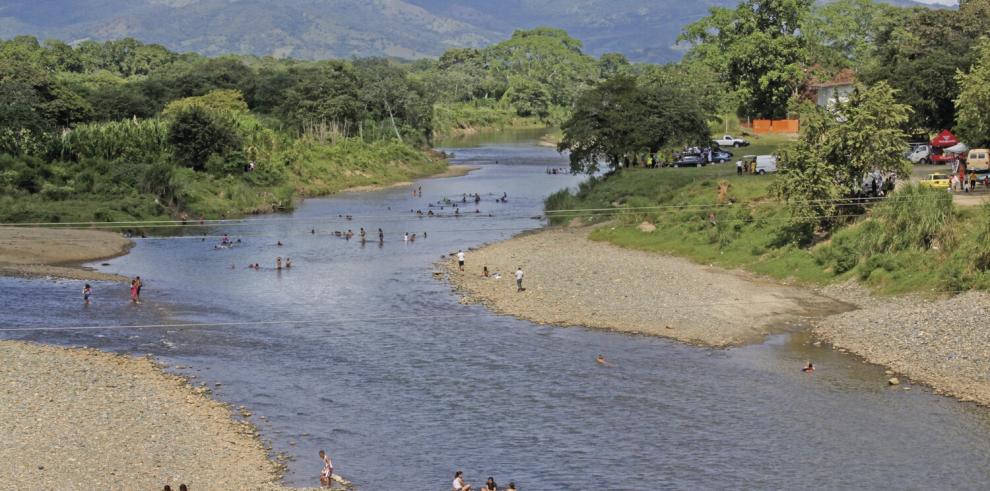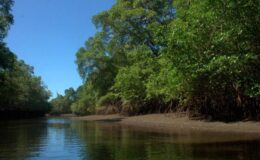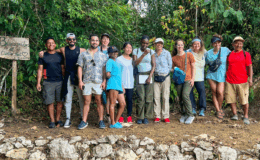March 14th, big day for Environmentalists in Panama. Please read.
- By : Panama Now
- Category : Conservation, Environmental

https://www.laestrella.com.pa/cafe-estrella/planeta/200311/agua-energia-son
The importance of rivers goes beyond what is imaginable. Since ancient times, rivers have served civilizations as communication routes between cities, as well as a source of food, fresh water and energy for the communities settled in their surroundings.
Within this framework, there is no doubt that “it is our responsibility to be their voice and defend them against environmental destruction and indiscriminate hydraulic works”, as stated by the Fundación Ancón, a national organization dedicated to the conservation of biodiversity and resources natural of Panama.

That is why every March 14 the International Day of Action against dams and in defense of rivers, water and life is celebrated, an initiative that emerged during the first international meeting of victims of dams, held in Curitiba, Brazil, in 1997.
Since then, a forum for monitoring and defending rivers and their natural channels has been organized, which is very critical of dam construction policies.
Damaris Sánchez Samudio, member of the Foundation for the Integral Development of the Cerro Punta Corregimiento (Fundiccep), comments that this date is special because it celebrates the struggles and victories of many peoples of Latin America, for the removal of dams and the restoration of rivers. .
“It is a day to take to the streets to demonstrate and demand improvements in the policies and practices of decision makers. It is a day to educate others about the threats facing our rivers, and learn about the best water and energy solutions, ”he says.
For Sánchez, “rivers must be defended because they are a natural and subsistence asset. They provide the communities with many services necessary for the development and well-being of their inhabitants. ”
And he adds that many communities have been threatened with the approval of dam projects, since they have a great impact on the lives of those who live in nearby communities. “They are very affected, mainly because they are not taken into account when companies and governments make decisions regarding the use of the river,” he explains.
According to the representative of Fundiccep, rivers are an ecosystem with a large number of species of plants and animals.
What is the call?
To raise awareness about the importance of rivers, many peoples of Latin America have spoken out to demand that governments protect them.
In the case of Panama, the National Network in Defense of Water brought together support groups that are affected by the destruction of rivers in different provinces, to demand a change in the way projects are carried out.
“We must respect the vision that peoples have regarding the use of rivers. It is not just about the economic benefit that can be generated from the use of water, but its possible depletion by projects such as dams. At some point they privatize them and the water from that river becomes a commodity, ”says Sánchez.

Do dams harm the environment?
The construction of dams and the destructive activities in the river basins have generated a socio-environmental problem, caused by anthropogenic action (such as deforestation) and which put both habitat and sensitive ecosystems at risk, condemning entire peoples to uprooting and the loss of cultural identity, says Sánchez.
International environmental organizations point out that these mega-works (dams and hydroelectric), in addition to the large economic resources they acquire, harm fertile lands in an extreme way, destroy areas of high historical-cultural or landscape value and contribute to the dislocation of entire communities, that thicken the list of environmental refugees, settling in large cities, exacerbating the problem of overcrowded cities.
In this context, annually the organizations that make up the Movement of Dam Affected (MAR) organize a series of activities related to the commemoration of March 14.
The date is important and symbolic. It is a day of struggle in defense of life and environmental rights, so that there is a fair reparation to all families victims of crimes committed by companies and the absence of adequate government policies.
MAR summons all those affected, allies and society as a whole to participate in this day of struggle. This 2020 the affected populations remember the crimes of mining in Mariana and Brumadinho, in Brazil, and join the defense of life after the murders of women leaders of organizations such as Berta Cáceres, in Honduras; Nicinha and Dilma Ferreira, in the Brazilian Amazon; in addition to the political legacy of councilor Marielle Franco, murdered in Rio de Janeiro.”We must respect the vision that peoples have regarding the use of rivers. It is not only the economic benefit that can be generated by the use of water, but also that this resource may be depleted due to projects such as dams … “
DAMARIS SÁNCHEZ
REPRESENTATIVE OF FUNDICCEP
“In all cases, impunity prevails. With actions for the search for the sovereignty of peoples and the defense of common goods, we join the mobilization agenda of the Continental Day for Democracy and against Neoliberalism. The organization and struggle of those affected throughout the continent is for life, for our rights and for the rivers, ”says a statement from MAR.
“Water and energy are not commodities. Water for life, not death ”, concludes MAR.
Dams have contributed to climate change
Important rivers
International environmental organizations affirm that the more than 45 thousand large dams that have been built around the world have contributed to climate change and droughts on the planet, since more than 50% of the rivers are dammed. What else is needed to become aware?
Currently the most important, mighty and powerful rivers on the planet are the Amazon, the Congo, the Ganges, Yangtze, Orinoco, Paraná, Yenisei, Lena and San Lorenzo. In Panama the Chagres stands out, with 125 kilometers between Panama and Colon; its existence is vital for the functioning of the Canal. The Changuinola, with 110 km, is a wild river located in the heart of the La Amistad International Park. El Indio, with 97 km, located between Panama west and Coclé; the Cricamola with 83 km, which leaves the heart of the Ngäbe-Buglé region; Sixaola, with 70 km, is part of the border between Panama and Costa Rica; the Chucunaque, with 231 km, crosses the province of Darién; the Tuira, with 230 km, is born within the Darién National Park; the Bayano, with 206 km, is the largest in the country and is used for power generation; the Santa María, with 173 km, supplies water for human consumption and irrigation in Coclé, Herrera and Veraguas; the Balsas, with 152 km, located in the Darien jungle; the Chiriquí Viejo, with 128 km, from which water is extracted for purification, irrigation and energy production in Chiriquí; The Villa with 119 km, is the most important source of water for multiple uses in Herrera and Los Santos; the Tabasará, with 109 km, recently incorporated into energy production; the Grande with 97 km in Coclé and the San Pablo, with 148 km, which bathes the western region of Veraguas, where it provides water for human consumption, irrigation and energy. it is the most important source of water for multiple uses in Herrera and Los Santos; the Tabasará, with 109 km, recently incorporated into energy production; the Grande with 97 km in Coclé and the San Pablo, with 148 km, which bathes the western region of Veraguas, where it provides water for human consumption, irrigation and energy. it is the most important source of water for multiple uses in Herrera and Los Santos; the Tabasará, with 109 km, recently incorporated into energy production; the Grande with 97 km in Coclé and the San Pablo, with 148 km, which bathes the western region of Veraguas, where it provides water for human consumption, irrigation and energy.



No Comments